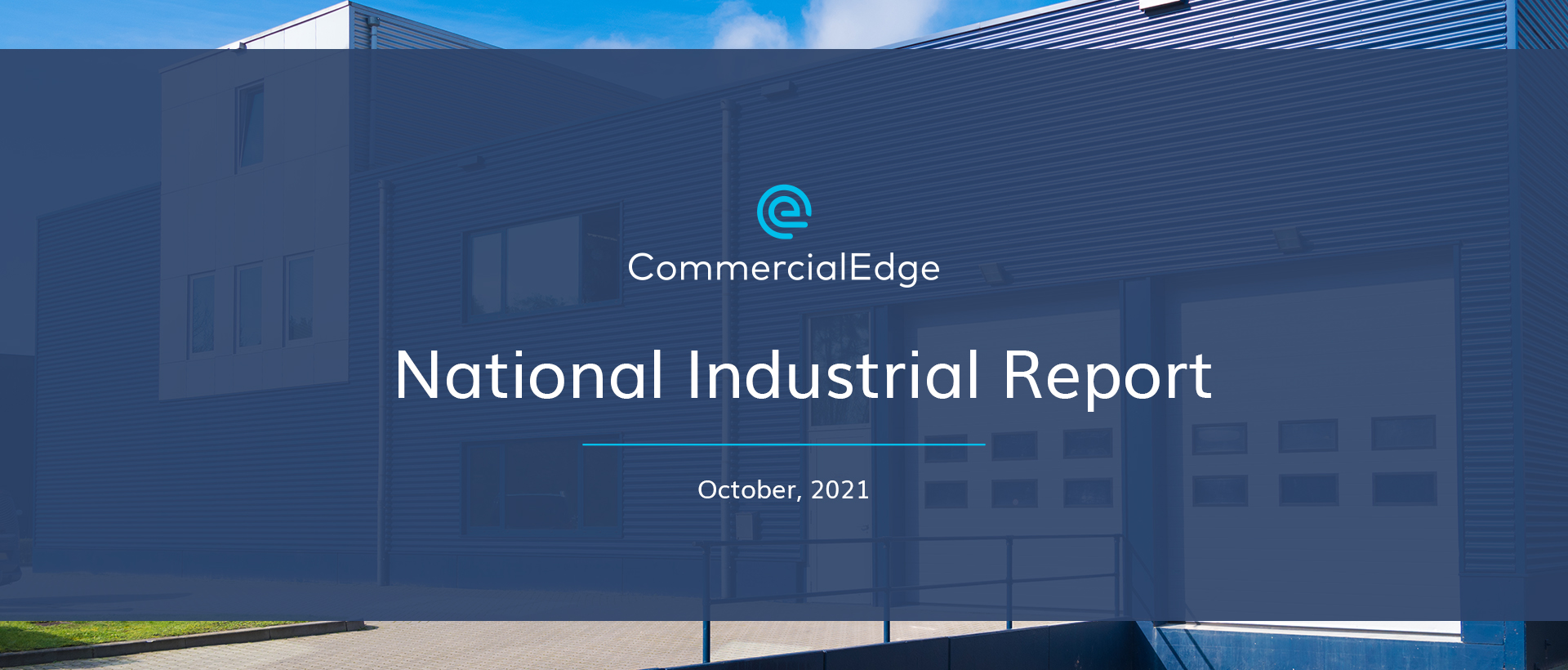Key Takeaways:
- The average rent for industrial space in the U.S. remained at $6.35 per square foot in September
- Vacancy across the top 30 U.S. industrial markets dropped 20 basis points M-o-M to 5.7%
- Year-to-date sales totaled nearly $42 billion, with average sale prices increasing in almost all markets
- September closes with 217 million square feet delivered since the start of the year
US Port Market Premiums Top National Lease Spread Increases
The average asking rent across the top 30 U.S. markets rested at $6.35 per square foot in September — 3.5% more year over year, but unchanged compared to the previous month. The highest rents and rent increases continue to be recorded in port markets. For instance, the average rent for industrial space in New Jersey saw the largest increase, of 6.4% over the past 12 months. The Inland Empire and Nashville followed close behind with year-over-year increases of 6.1% and 6%, respectively.
In terms of premiums, our analysis found that new leases in New Jersey cost, on average, $2.60 more per square foot than in-place leases. Boston followed closely with lease spreads of $2.53 per square foot.
Read to the end and download the full October 2021 report for updated lease rate and vacancy stats for all major U.S. markets.
Inland Empire Vacancy Shrinks to 1.1%, Indianapolis is Tightest Midwest Market at 2.3%
As the easing of supply chain bottlenecks continues to be slow, the availability of industrial space in port markets, as well as supporting regional logistic hubs remained significantly low. Sluggish shipment transit continues to see the Inland Empire posting minuscule vacancy rates — 1.1% in September. Though not a port market itself, this sizeable regional distribution hub takes on a significant portion of the shipping volume received from both Los Angeles and Long Beach ports.
Similarly, storage and distribution demand spilling outside intake markets has driven vacancy down considerably across several other landlocked hubs. For instance, industrial vacancy in Indianapolis hit 2.3% last month, while Columbus was at 2.4%, and Kansas City industrial real estate recorded an average vacancy of 3.4%.
National Price per Square Foot Exceeds $108
As industrial market fundamentals continue to attract significant investor attention, pricing continues an upward trajectory. The average sales price for industrial assets year to date reached $108.22 per square foot, which marked a 23% increase compared to last year.
Orange County is still in the lead, with an average sale price of $300.27 per square foot. The Bay Area average of $221.71 per square foot came in second, followed by Los Angeles at $210.68 per square foot, Seattle with $199.95 per square foot, and New Jersey averaging $192.77 per square foot.
Transaction activity during the first three quarters of the year resulted in a total of $41.7 billion in industrial sales.
More Than 6% of Stock Under Construction & Planned Across Top US Markets
The under construction pipeline increased more than seven million square feet through September across the industrial markets analyzed for this report. At the close of last month, under construction projects together with planned developments totaled 6.3% of stock.
The sprawling Dallas-Fort Worth market continued to lead in terms new supply, with 36.5 million square feet currently under construction (4.5% of stock). Phoenix is home to the second-largest expansion pipeline, at 26.6 million square feet of industrial space in development (9.9% of stock). Meanwhile, Chicago is a very close third, with a nearly even 26 million square feet under construction (2.7% of stock).
The national supply forecast estimates yearly delivery volumes of at least 350 million square feet, through 2026.
Download the complete October 2021 report for a full picture on how U.S. industrial markets fared in the first nine months of the year, including insights on industry and economic recovery fundamentals.

You can also see our previous industrial reports.
Methodology
CommercialEdge added new markets to the National Industrial Report as Yardi Market Insight has increased its coverage to more than 50 markets in recent months. As such, the national numbers in this and future reports are not comparable to past issues.
The monthly CommercialEdge national industrial real estate report considers data recorded throughout the course of 12 months and tracks top U.S. industrial markets with a focus on average rents; vacancies (including subleases but excluding owner-occupied properties); deals closed; pipeline yield; and forecasts, as well as the economic indicators most relevant to the performance of the industrial sector. For a detailed methodology, download the full report above.
Stay current with the latest market reports and CRE news:
Latest Posts
Recent Reports
Anticipated Office Distress to Materialize in 2025
The wave of distress anticipated since the peak of the pandemic has begun to materialize at the beginning of 2025.
Tariff Uncertainty Brings Short-Term Disruptions to Industrial Sector
Tariff uncertainty will lead to delayed leasing decisions from industrial occupiers, while also increasing construction costs
Coworking Continues to Gain Traction Amid Shifting Market Dynamics
Coworking spaces across the nation continue to grow in numbers and popularity, bringing more options to the office sector amid ongoing shifts.







